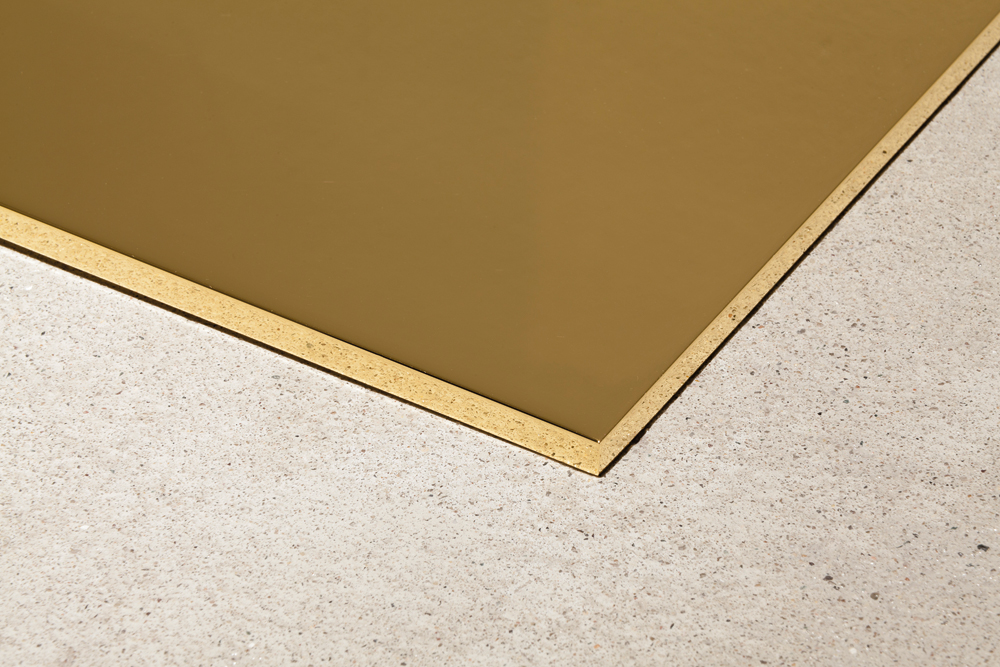In Focus: Lazaros
Deep space, sculpture and Mormonism
Deep space, sculpture and Mormonism

Kolob, in Mormon mythology, is the star closest to God. Furthest away is the universe’s lightless fringe; as distance from Kolob grows, so does damnation. Thus the gradient of grace that structured ‘Hie to Kolob’ at Martos Gallery in 2015, the first New York solo show by the artist then known as Jason Metcalf, now called Lazaros. A set of incandescent track lights (titled Kae-e-vanrash, 2015, after the force that governs heavenly bodies) began in near-darkness at the front of the gallery and grew to blinding at the back; a suite of four corresponding airbrush paintings ranged from ( ) (2015), an almost-black canvas ringed with purplish nebulae, to (α 8.5h 22.5m 20.02045s /δ -14.5° 0’ 14.059”) (2015), a titanium-white starburst. Their titles refer to astronomical coordinates, a cosmology wishfully mapped onto more scientific charts, with Kolob at the centre of the Milky Way. Instead of Kolob, brightest at Martos was A Paved Work of Pure Gold (2012/2015), a 30 cm2 gilded aluminium plate, which threw a column of ‘pure’ reflected light against the wall. Visitors reached not a godhead but a minimalist representation of it – pointedly, fabricated by an aerospace contractor to the standards of NASA.
The Mormons lack neither creativity nor pioneer spirit; their ambitious, 19th-century proposal for the Holy Kingdom of Deseret became, after much Congressional revision, the present-day us state of Utah. It’s fitting that Lazaros, born in Salt Lake City to a Mormon family, came to his folkloric and spiritual subjects by way of a religion whose founder claimed to have used ‘seer stones’ to translate prophecies from golden tablets. Yet the success of Mormonism proves – if proof were needed – that fictions can have real consequences. One person’s hoax might become another’s truth – a phenomenon known as pseudo-ostension which, for Lazaros, unites religion, superstition, anthropology and art.

Lazaros has made work as the pseudonymous Historical Society of Deseret (HSD) since the inaugural Utah Biennial in 2013, where he presented A Historical Tour of the Kingdom of Deseret, Volume III – purportedly a reprint of an obscure tract the group published in 1997 but, in fact, the artist’s own compilation of Mormon lore. Though Lazaros can be candid about his sources, his gallery texts and press releases maintain the ruse. For Lazaros, there is great potential in works achieving a sort of confusion-cum-truth. Accordingly, the Society’s archive of flags, textiles and tools – now permanently on display as ‘New Acquisitions from the Deseret Collection’ in a building in Wendover, Utah, at the (similarly semi-officious) Center for Land Use Interpretation – makes no mention of its only extant member. Other projects go further: a vitrine and didactic plaque mimicking the carved sans-serif style of the local park service, placed on the forested East Marion property of Lazaros’s gallerist, Jose Martos, exhibit faux remnants of the area’s actual first settlers, the Orient Focus People (Orient Focus People Artifacts (HSD.OFP.144.2011 – HSD.OFP.377.2011), 2014). The artist plans to purchase a mining claim in Nevada, then stock the abandoned excavations with fakes.
Lazaros also practices less authoritative, more magical tricks. A series of sculptures – begun in 2009, and based on folkloric remedies from Utah, Haiti and elsewhere in the Americas and Europe – combines rusty metal, fruit, knots, keys, salt and hexaform symbols into protective and auspicious talismans: what the artist calls pseudo-ostensive objects. For his 2015 solo show at JOAN, a live/work gallery in Los Angeles, the artist permanently installed spells designed to bring luck to a new home. In a ritual cleansing, Lazaros swept the space thoroughly, burned the broom, then entombed the ashes and dust in one of the gallery walls. A beam still bears a row of 40 rusty nails for luck and, for money, a jar full of pennies sits in the kitchen. Efficacy aside, these charms have a sculptural affectation, com-bining outsider vernaculars with bad-faith museological aesthetics.

Indeed, the question of faith keeps us uncomfortably close to art’s latent metaphysics. Works such as the golden plate and cheesy cosmic abstractions of ‘Hie to Kolob’ recall the more transcendent parts of the art-historical canon – and their ineffable appeal. Lazaros’s elegant A Silver Cord, first installed at Gagosian Beverly Hills for the 2014 group show ‘CLEAR’, is a long, mirror-finished steel cylinder stuck through a gallery wall. Both ends jut into mid-air. The piece was fabricated by a contractor with ties to NASA and the Jet Propulsion Laboratory (JPL), invoking Jack Parsons – JPL founder, chemist and Crowley-ite occultist. In many cultures, a silver cord is thought to keep the soul tethered to the body, and can supposedly be glimpsed during out-of-body travel. For a rocket scientist practicing magic, ‘astral projection’ is doubly possible. What is held together by a perfectly machined, minimalist, space-ready rod between two empty gallery rooms – between nothing and nothing? Perhaps the hope that, short of Kolob, we might still be transported.
Metcalf has periodically called himself Lazaros for several years, and routinely so since the start of this year – in order, he says, to reflect the increasingly spiritual nature of his work. The switch is also a bit of showmanship. Lazaros means ‘helped by God’ – and when no god intervenes, a believer might yet find the mystic truth in a huckster’s act. The British minimalist painter Bob Law wrote that the first work of art was not a handprint on a cave wall, but a footprint drawn in the sand in order to confuse a rival. Art is deceit; and if Lazaros doesn’t believe in the rituals he performs, he has full faith in their effects.
Lazaros is an artist based in Los Angeles. In 2015, he had solo exhibitions at and now, Dallas, USA; JOAN, Los Angeles; and Martos Gallery, New York, USA.
























